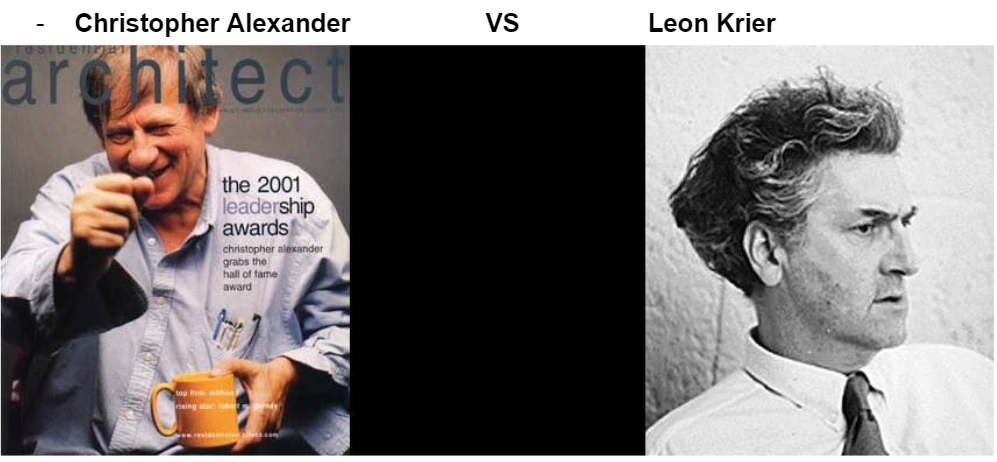Architecture and Art
Two architects - two ideological predicaments
Edited by Meder Akhmetov
Dear reader, In the text below i want to introduce you to the latest emerging philosophical trends and I'll try to show them with architectural examples. The architects I chose for this demonstration are two well-known architecture visionaries, with drastically different approaches and visions.
- On the one hand the architect Christopher Alexander and his famous “pattern language” book. If we look at it from a philosophical point of view and take as a critical tool the emerging new metaphysics named object-oriented ontology (OOO). The ontological system was developed by American thinker Graham Harman. According to OOO “pattern language” is a way of simplifying the architecture from below, "undermining the architectural object". Reducing architecture to its components, to what it consists of, to the constituent elements of it. That said from a negative approach to what should be the genuine object, the core of architecture.
- On the other hand, another architect, Leon Krier, reduces the architectural object in another way, by "over mining it". If the “pattern language” decomposes the architectural object into components, into atoms. And the atoms are vernacular, which means we can qualify them as "too human" (anthropocentric). Leon Krier, on another hand, is a kind of elite, aristocrat, speaking not about what architecture is made of, but what architecture does. The first case answers the question "what?", the second answers the question "how?". In the second, elitist reduction, the object is part of something global, something bigger, a society, a city, an ideal model, an ideal image; in the first, vernacular, "bottom-up" the object is subjected to decomposition into "what" it is made of. According to Harman, there are still double articulations, when both "undermining and over mining" merge into one. While I have not yet picked up the example of the architect to this double approach, perhaps most architects would fit into this category. However, the question remains where is the actual architectural object hiding from our reasoning.
When you look at a book by the architect Christopher Alexander, there is a sense of "under design"(недодизайн) that undermines architecture. When one looks at a book by the architect Léon Krier, there is a sense of "over-image"... as if "demanding too much".
Introducing another object-oriented colleague from France Tristan Garcia. In Tristan Garcia's philosophy, the object is hiding in the difference between undermining and over mining, it is in the "solitude in the world". Creating a formal plan, inaccessible to man, but accessible to other objects (object-object relations), so to find an object you need a common plan, a "big table" on which all objects are equal(radical democracy of objects) and each is therefore alone and makes form with the world. This is incomprehensible to those who undermine the object "bottom-up," trying to tell what everything is made of, of what atoms, patterns... neither is it incomprehensible to those who see the object "top-down" trying to create a perfect model…

